Just because there’s a blanket of snow on the ground doesn’t mean there’s not something interesting growing on inside. From a splash of colorful contrasts to leafy cantilevers, it’s no secret that houseplants can chlorophyll a room. Yet these aren’t your everyday arrangements. Sumptuous succulents and provocative palms provide an architecturally intriguing infusion of life into even the coldest of environments. And with a little imaginative design, it’s easier than ever to plant your green thumb squarely on the horticultural zeitgeist. With an eye toward planting the seeds of great design possibilities, we’ve curated a small collection of funky flora to help spruce up your modern spaces.
Also take a look at our behind-the-scenes post about the photographic technique.
IMAGES: James Florio + Kyler Deutmeyer
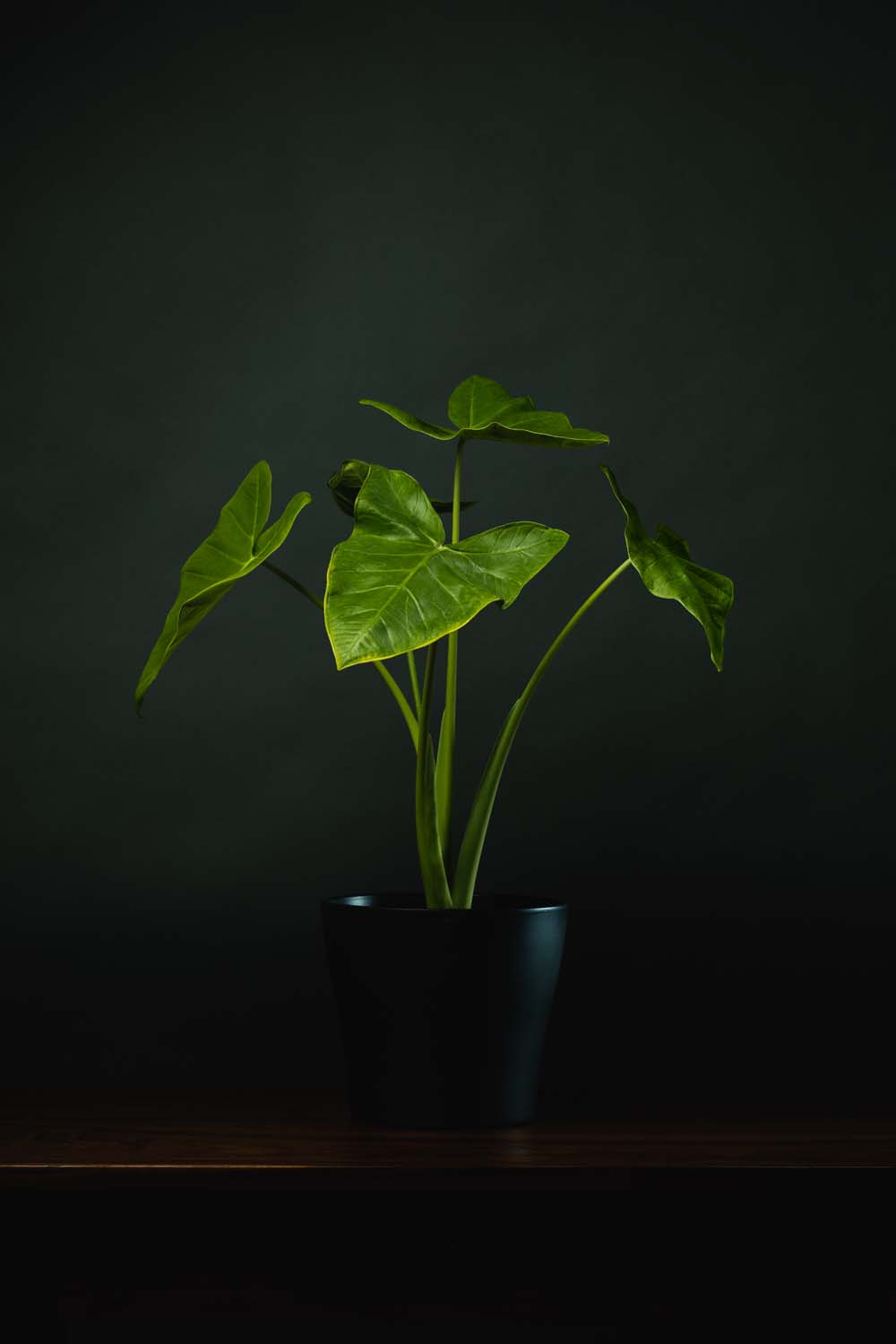
Xanthosoma ‘Lime Zinger’ – Elephant Ear
We love the bright chartreuse leaves of this tropical plant, but with a touch of the tropics comes high maintenance to survive in our dry Colorado climate. The Lime Zinger requires high humidity, so a humidifier is a must-have. While there are many varieties of the Elephant Ear, the Lime Zinger can grow up to six-feet tall. Our only complaint: This plant is toxic to pets.
Stayin’ Alive
The Lime Zinger does best in strong, filtered light. While it can tolerate direct sun, like people, it can easily sunburn. When it comes to water, this species requires fast-draining, continually moist soil that is rich with organic matter.
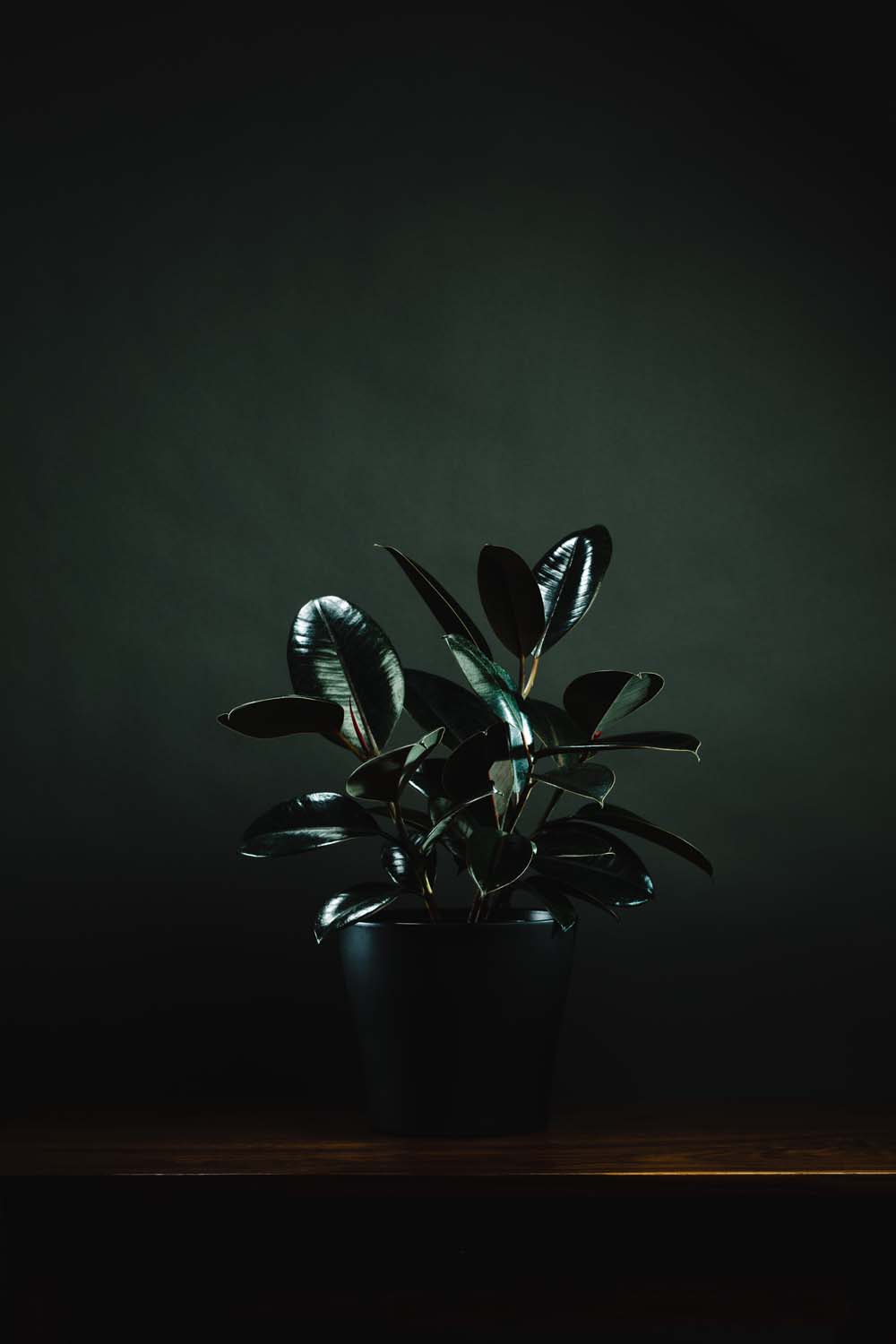
Ficus Elastica – Burgundy Rubber Plant
The deep color and shiny leaves of the Burgundy Rubber Plant are a decadent touch to dull interiors. But with that shine comes a layer of dust. To remedy, wipe the leaves with a moist cloth. And if the plant becomes too tall or leggy, cut off the tops. Simply pick a good height and slice through the main stem with a sharp knife. The remaining portion of plant will become sturdier as the new central branch grows.
Stayin’ Alive
Bright, direct sunlight produces a dark burgundy leaf. No light? No problem. This plant will tolerate low light, but the leaves will fade to light green. Water the Burgundy Rubber Plant only when the soil is dry by pouring water into the top of the plant pot and letting it run out the bottom to soak the roots.
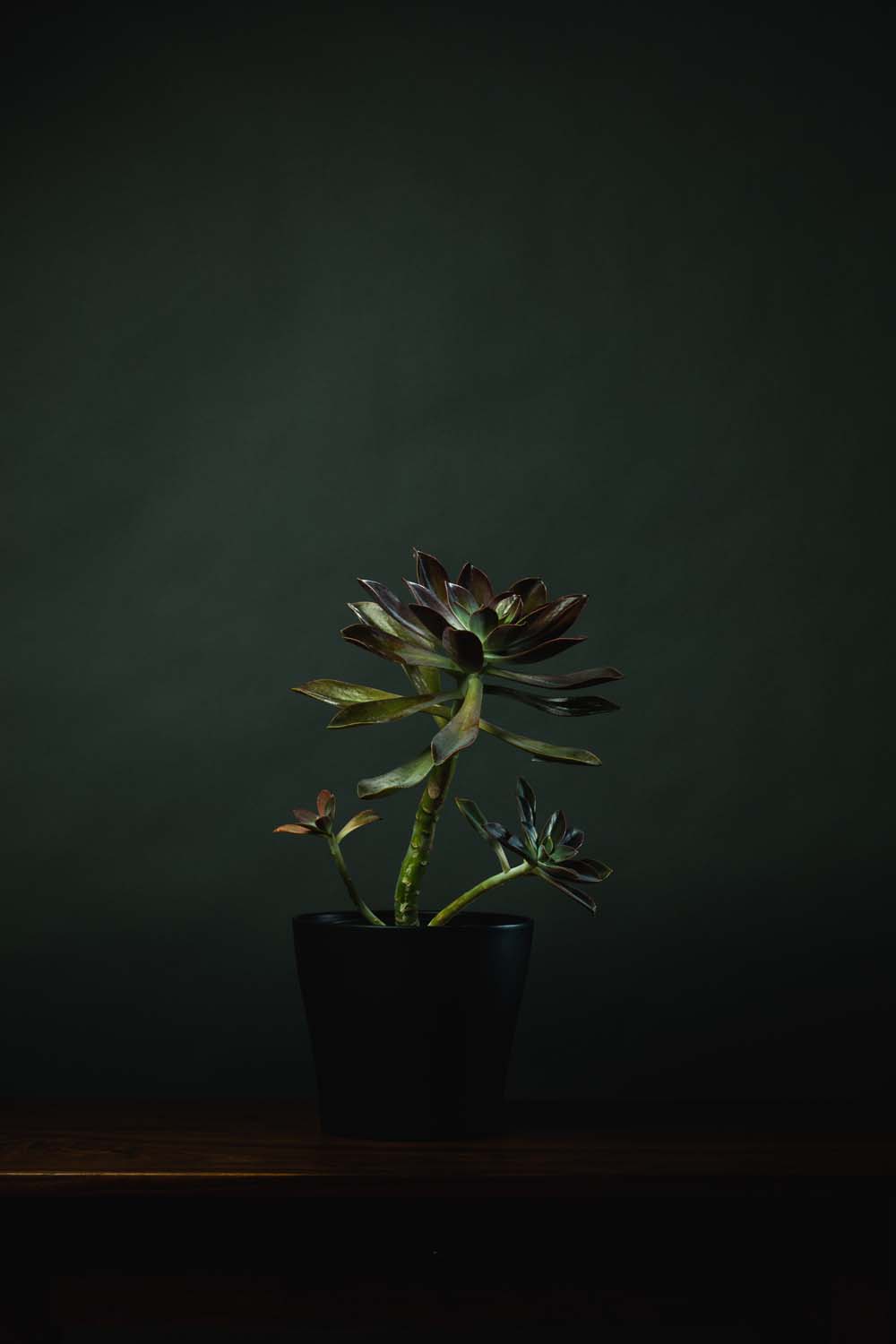
Echeveria – Echeveria ‘Black Prince’
It’s dark. It’s dramatic. And it’s an easy-to-care for succulent! While the rosettes of most Echeverias are close to the soil, we love the height gained on this one from City Floral. In winter, its color is green but darkens to purple or black in full sun. Be sure to plant in the smallest pot possible, just bigger than the root ball to prevent root rot. In the case of sunburn, simply behead the plant.
Stayin’ Alive
This plant prefers bright light, but avoid afternoon sun altogether, as it can cause stress and sunburn. Don’t overwater, but make sure the soil is never bone dry. Pour water until it drains out the bottom and repeat. Keep your eye out for wilting, shriveling, and dropping leaves—all signs of poor watering.
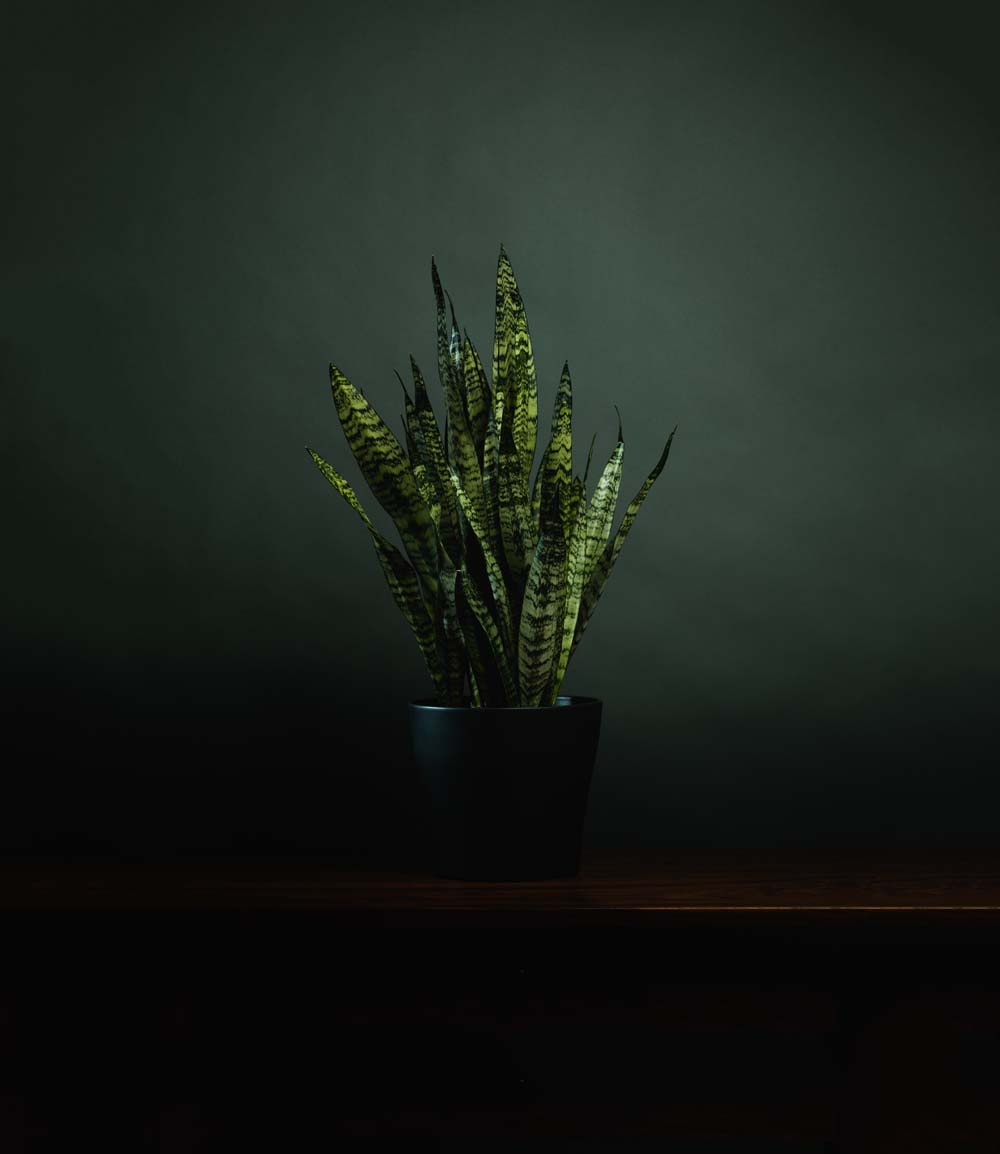
Sansevieria – Snakeskin Plant
The Snakeskin Plant, one of about 70 different species of snake plants, is your best bet for the horticulturally challenged. In mid-century modern homes, you’ll often see the Mother-in-Law’s Tongue variety, easily identified by its yellow edges. Unlike most plants, Sansevieria gives off oxygen at night; put at least a half dozen in your room to improve air quality.
Stayin’ Alive
Sansevieria does best in east, west, or north windowsills. This tough plant can survive with any bright light and is great for windowless offices and dark rooms. Water very little in winter or in an air-conditioned room, and wait until the pot is quite dry before watering. Use room-temperature water (distilled if possible).
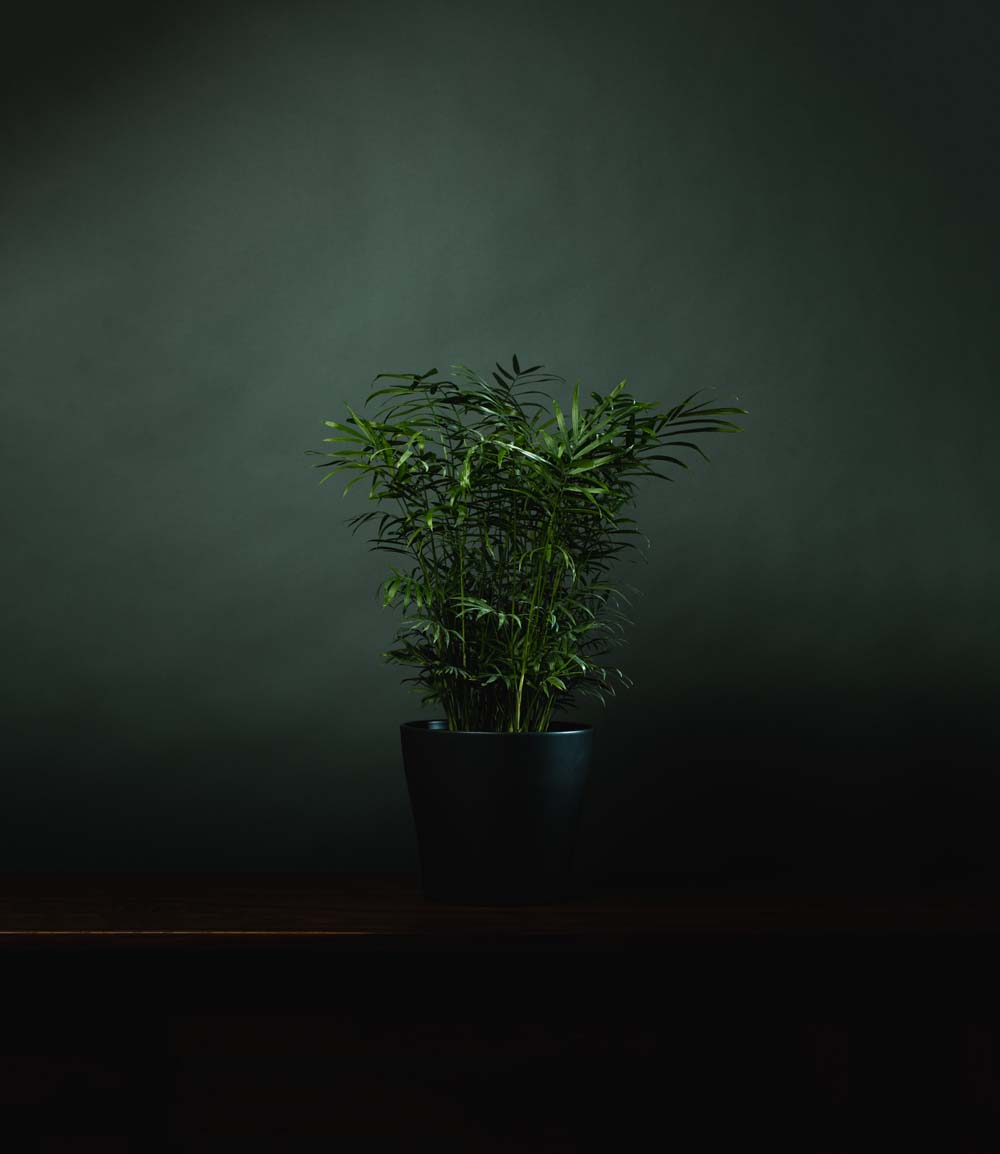
Chamaedorea Elegans – Parlor Palm
We love large palms in modern homes, but many can break the bank. The Parlor Palm is a cost-effective alternative that does well where many other species struggle. Not only is it great at cleaning the air, but it’s easy to care for with its adaptivity to low light and humidity. With enough light, a mature plant may produce small yellow flowers. The flowers are followed by seeds that are rarely fertile and not worth saving. Simply cut the flowers off when they begin to turn brown.
Stayin’ Alive
The perfect spot for the Parlor Palm is somewhere bright. Low light will be tolerated but is not preferred, and harsh sunshine will scorch the leaves. Underwatering trumps overwatering, so water well, then wait until the surface of the soil has dried out, at which point, water well again.
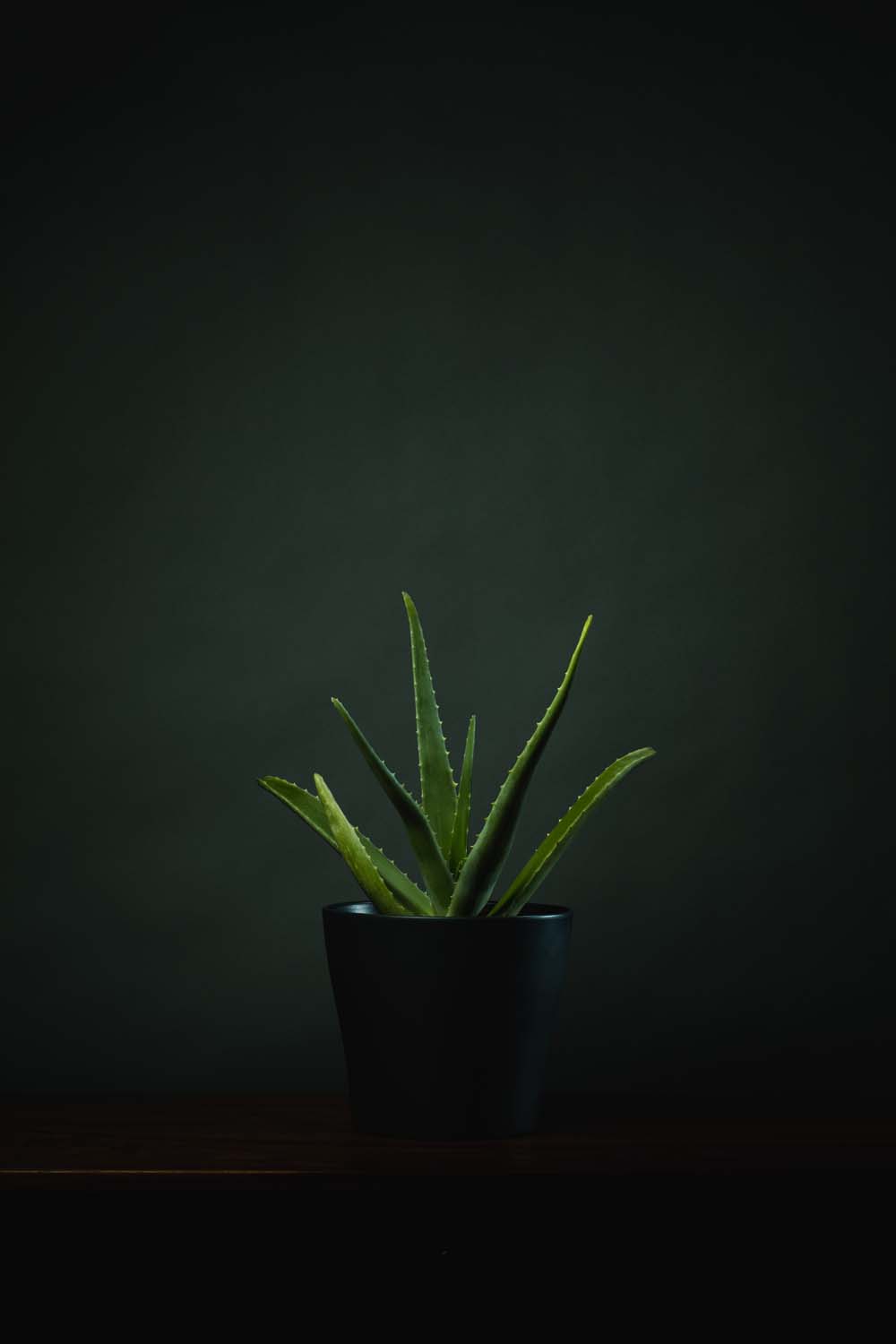
Aloe Vera – First Aid Plant
What can’t this plant do? You can drink its juice, use it to soothe a sunburn, and it’s architecturally interesting to boot. If they get enough light, over time, aloe vera plants flower, starting as a spike that gradually gets larger. The plant produces offsets or “babies” that can be removed to produce an entirely new plant, but beware: Aloe vera is toxic when ingested by cats and dogs.
Stayin’ Alive
If in doubt about watering, don’t! They shouldn’t be cold and wet. Water aloe deeply, but then allow the soil to dry at least 1-2 inches deep between waterings in order to discourage rot. Water even less in winter, and keep it in bright, indirect light.




